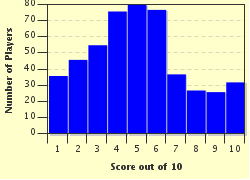Quiz Answer Key and Fun Facts
1. There is a claim that the detective genre had its absolute beginning with the Edgar Alan Poe penned 'The Murders in the Rue Morgue'. This story introduced the character C. Auguste Dupin and his investigation of a mother and daughter double murder. Where exactly did these Rue Morgue murders take place?
2. For Fergus Hume, 1886 was the absolute beginning of a writing career that would see him publish in excess of one hundred works. His first novel, a murder mystery set in Melbourne and featuring Detective Kilsip, was a huge international success and went by what title?
3. The great Sherlock Holmes had his absolute beginning in the full length story 'A Study in Scarlet' in 1887. In which publication did readers get their first glimpse of this now world famous literary character?
4. The short story 'The Blue Cross' was the absolute beginning for the amateur sleuth Father Brown. In it the author deviates from the typical plot of a mystery by putting an original twist on it that, as is expected, becomes clear at the end. Who is this author?
5. 'The Mysterious Affair at Styles' was the absolute beginning of Agatha Christie's famed career as a whodunnit author. In it she introduced no less than three characters who would later appear in some of her subsequent novels; who of the following was NOT one of them?
6. The husband and wife team of Per Wahloo and Maj Sjowall saw the absolute beginning of their excellent police procedural series with the publication of 'Roseanna' in 1965. Centred around the Homicide Squad of the Swedish National Police, what was the name of the main character by which the series is commonly referred to?
7. Brother Cadfael, my favourite Benedictine monk, had his absolute beginning in the Ellis Peters novel 'A Morbid Taste for Bones' in 1977. A big and important part of his character that we learn early on in this story is that Brother Cadfael is something of a dab hand at what?
8. 'The Silver Pigs' by Lindsey Davis was the absolute beginning for the Imperial informer Marcus Didius Falco. While the majority of this novel is set in first century Rome, Falco also travels to Britain for some undercover investigations in what type of workplace?
9. The absolute beginning for Andrea Camilleri's Inspector Montalbano came in 1994 with the novel 'The Shape of Water.' The story is set in the fictional town of Vigata, a place that Camilleri created and located on which Italian island?
10. Polish author Marek Krajewski saw the absolute beginning of his series of noir novels featuring Police Counsellor Eberhard Mock in 1999. Born and raised in Wroclaw, Krajewski used the former name of this city in the title of this book and as such it is called what?
Source: Author
Aussiedrongo
This quiz was reviewed by FunTrivia editor
looney_tunes before going online.
Any errors found in FunTrivia content are routinely corrected through our feedback system.

